What are sheep and how to grow them?
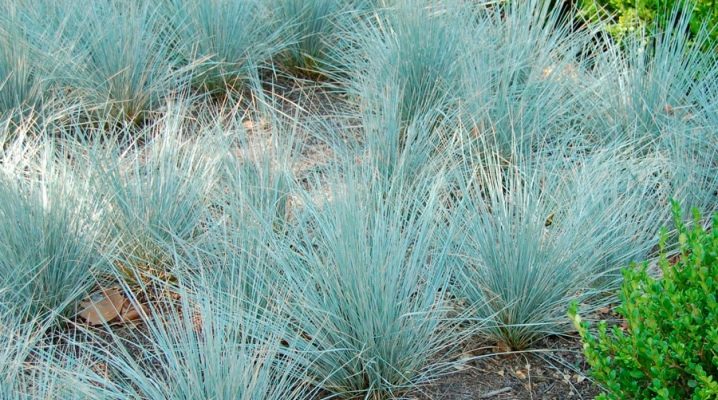
Many ornamental grasses have an unprepossessing appearance, and evergreen oat is no exception. Despite this, this plant is actively used in the improvement of personal plots.
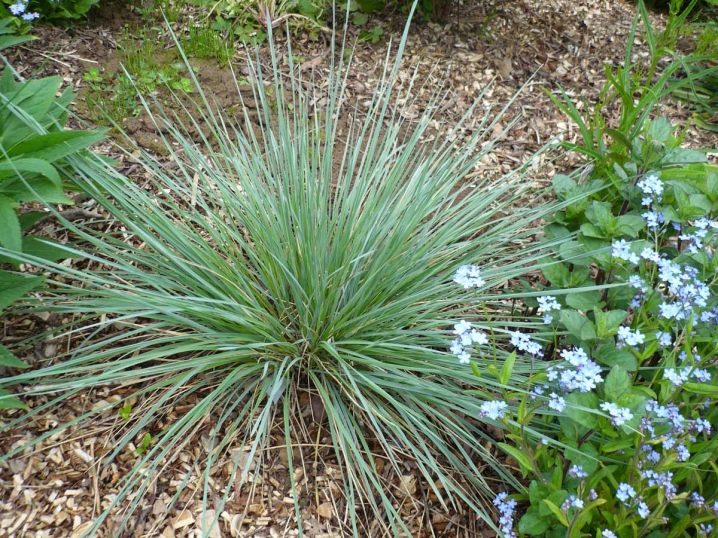
Description
The scientific name of the sheep is helicotrichon, it refers to perennials. Represents evergreen herb belonging to the family of cereals. The sheep has a fibrous root system. The roots penetrate into the soil to a great depth, extracting moisture and nutrients from there.
The maximum plant height is 1 m, but more often it reaches 30-50 cm. The bushes become meter-long only in suitable conditions, if they are not planted. The leaves are elongated plates. At the bottom, their width is 1 cm; at the top, they become narrow and pointed. The maximum length of leaves is 50 cm. There are plants with folded foliage and folded lengthwise. The color is green-blue or gray.
The oat peduncles are erect, their length reaches 1.5 m. The plant expels soft panicles of gray-green color. They look unpretentious, but, towering above the bush, give it an airy look. Flowering occurs in July.
The homeland of this plant is the Alps. It can be found in the highlands in the western Mediterranean, in Africa, in European and Asian countries.

Views
There are several types of sheep, the most popular among them:
-
viviparous;
-
deserted;
-
pendula.
Evergreen sheep is usually called viviparous.... It is also known as blue. Bushes grow large, have a bluish-blue tint. This is a unique herb. There are no blue varieties with greater height.
The leaves of the viviparous sheep are narrow and sharp. They form a ball, the height of which is 30-50 cm. Sometimes you can find 1 meter bushes. During the flowering period, when spikelets are formed, the sheep grows in size up to 1.5 m. The ears are formed in the middle of summer and serve as a decoration of the garden until the arrival of autumn.
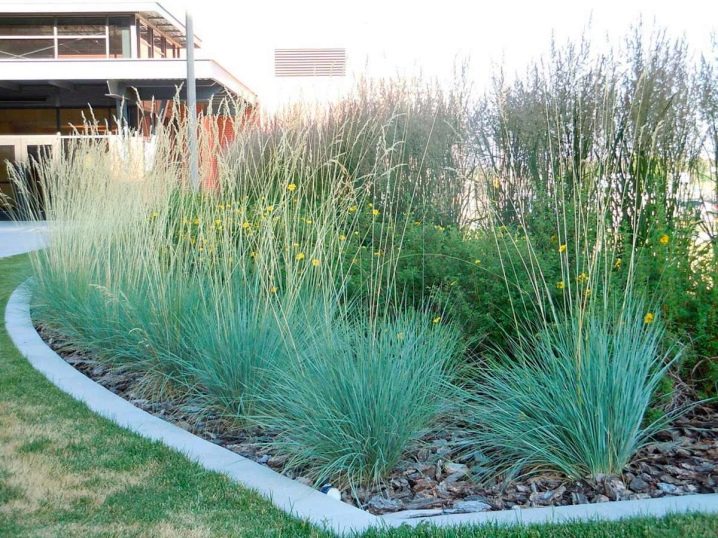
No less common desert sheep, which is a cereal up to 30 cm high. Distinctive features of this species are a dense armful of elongated thin leaves and panicle ears with large beige-brown grains. The pubescent sheep can transform any garden.
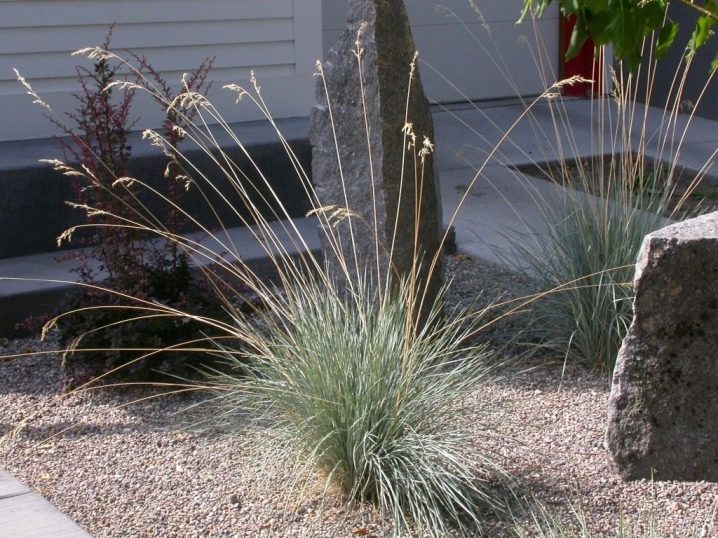
Of the decorative varieties, the most popular is pendula... Its foliage is the same as that of other species, but there are a number of individual characteristics. Pendula drives out meter-long peduncles, which are crowned with large panicle inflorescences.
By the appearance of the leaf plates, the decorative varieties of Heliktotrichon differ little, but have other individual characteristics. The leaves of the plant are green with a gray and blue tint.
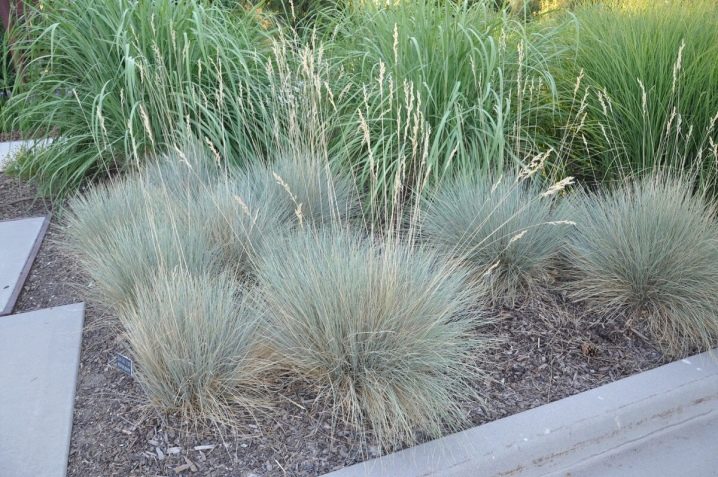
Another popular variety is Saphir Sprudel... Its foliage has a blue-gray color scheme. A distinctive feature of this variety is silvery shiny inflorescences.
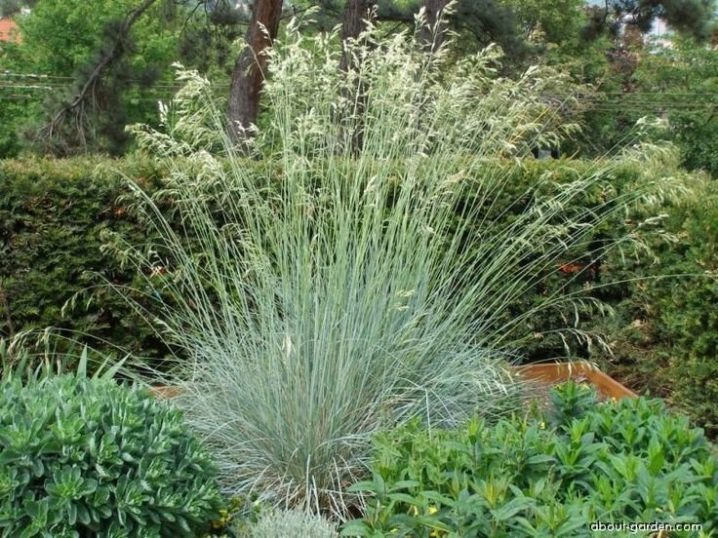
Disease resistance is characterized by oats Robust... Ornamental grass is able to grow even in an unfavorable environment, it is not susceptible to rust.
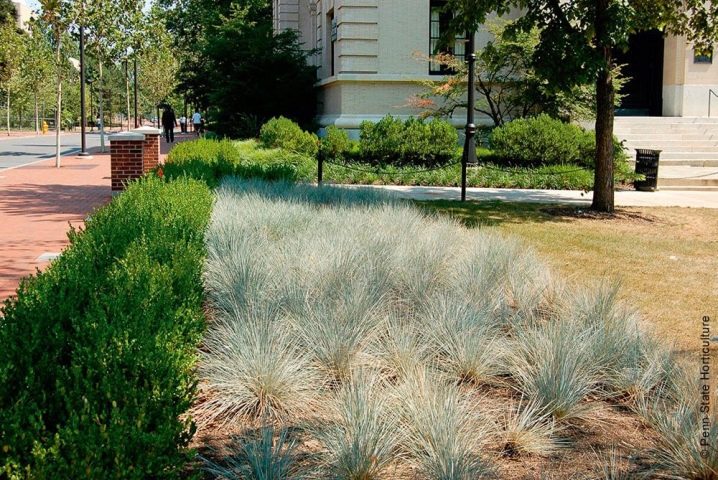
Landing
Planting density is determined based on the purpose of the bushes. Usually 1 sq. m planted 4 plants.
To form a hedge, the bushes are placed as close to each other as possible, maintaining a distance of 50 cm. Sprawling plants can be planted alone, near other flowers and shrubs. One bush can take up 1 sq. m, but he does not show aggression towards other plants. It can take 3 years without a sheep transplant.
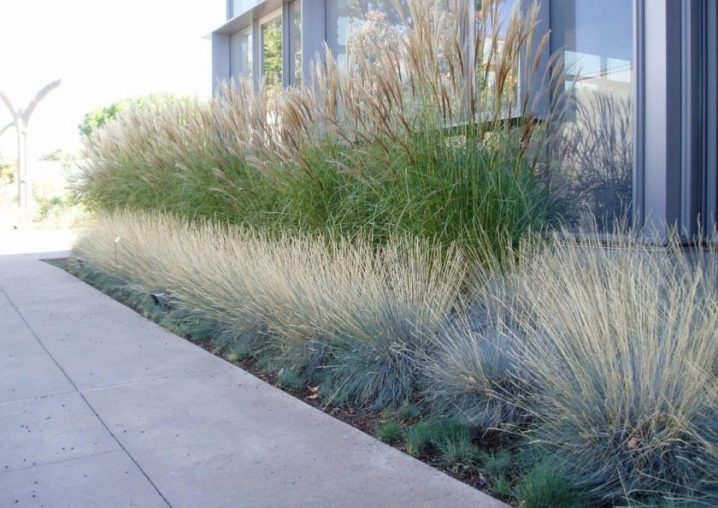
Care
This plant thrives in highlands. High humidity and temperature adversely affect its development. In such conditions, it makes no sense to count on good flowering, the risk of rust increases.
Dry weather is considered almost ideal for ornamental cereals. But prolonged heat can lead to drying out of the tips of the leaves, slow development of new ones. Irrigation for cereals is required exclusively during extreme heat. Water is brought in in a small amount so that it does not accumulate under the bushes.
It is not necessary to feed the plant with fertilizers, it can even harm. The introduction of a small amount of complex minerals is permissible only after planting young bushes. It is enough to apply top dressing once a year - in March. It is advisable to use liquid fertilizers.
A sheep successfully survives the winter in open soil, it does not need shelter.
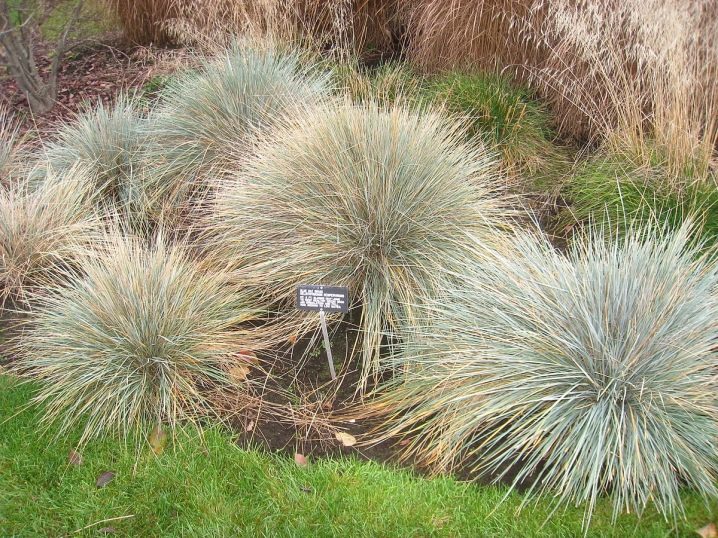
In the first winter for the plant, it does not need to be cut. In spring, the cereal does not look very attractive. It is necessary to remove dry foliage - grab it with your hand as close to the root as possible and carefully pull it out. With the arrival of autumn, the part of the plant located above the ground is cut off, leaving one rhizome.
For 3-4 years, the bush grows and becomes large. If it looks unkempt, with the arrival of spring it must be divided and planted. The panicles are harvested immediately after flowering ends, otherwise self-seeding will occur.
This plant is resistant to diseases and pests, but waterlogging of the ground can lead to rust damage. Sheep should be planted where there is no dampness.
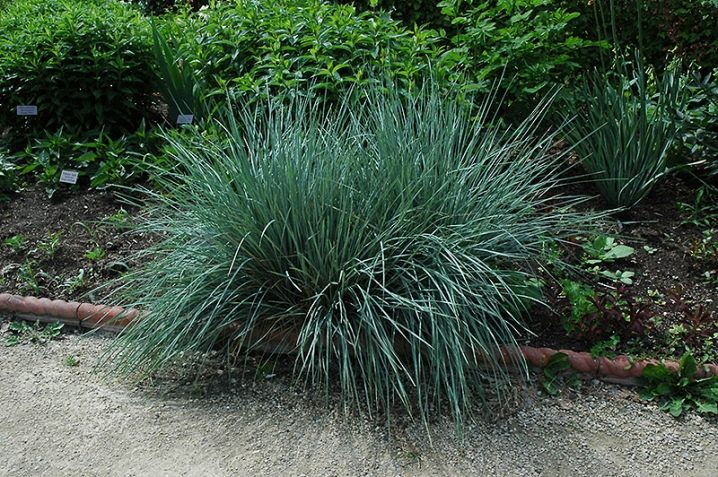
Use in landscape design
Viviparous sheep looks especially attractive in the autumn decoration of the garden. The yellow-red seasonal range emphasizes the bluish color of the cereal. Sheep retains its beauty when other flowers cease to please the owners of the garden. Variegated shrubs and trees make a great backdrop for emerald blue fountains.
Of the flowering horticultural crops, lavender, saxifrage, phlox are considered ideal neighbors for sheep. The gray cereal emphasizes their beauty.
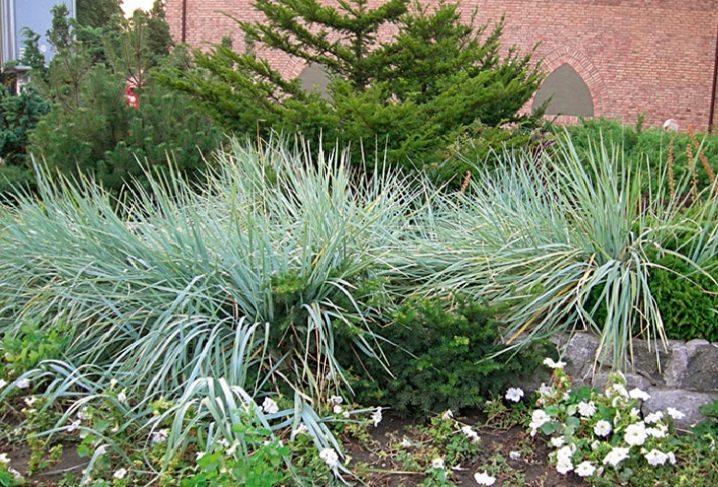
Sheep can be planted in rockeries, mixborders. It is ideal for alpine slides, allows you to create a presentable design for ponds and other artificial reservoirs. Thin foliage sways from the slightest gusts of wind, making the compositions voluminous, dynamic and light at the same time.
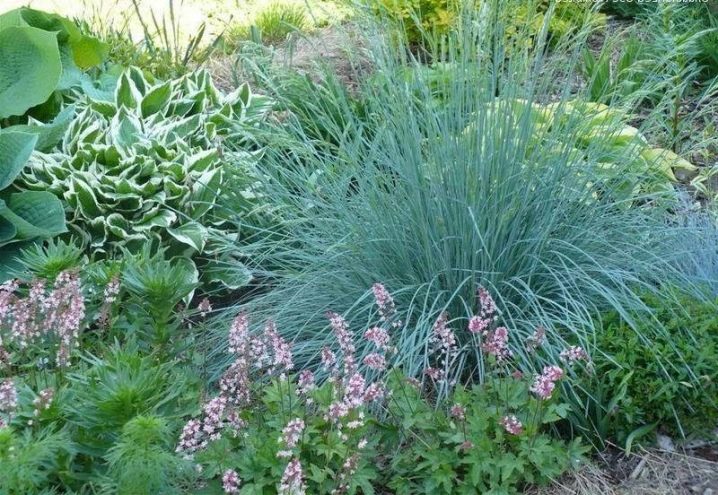
Decorative cereal is used to create a monoclumbus. It can be combined with other cereals. Duets with plants look most impressive, which turn yellow and red with the arrival of autumn.
Choose combinations of cereals in height and shape, do not forget to play on contrasts.

Fluffy sheep are often used in hedges. Such a composition will delight the eye for at least 3 years. The key advantage of this plant is its versatility. In landscape design, sheep can be used in many different ways. If you want to really create a mini-garden of cereals, turn part of the garden into an analogue of a real steppe. With the help of this plant, it is easy to place accents in decorative compositions, the bluish tint looks very unusual. Viviparous sheep, as it is popularly called, is able to decorate any site with its appearance.
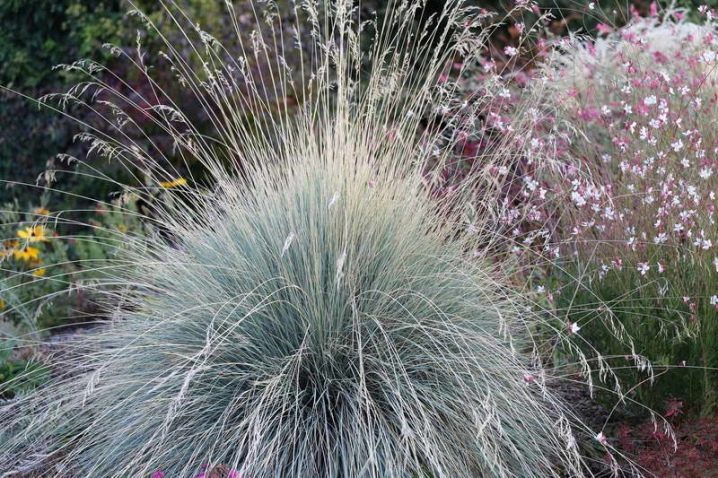













The comment was sent successfully.